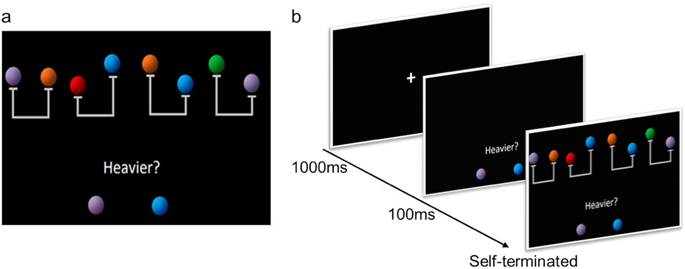npj Science of Learning ( IF 4.2 ) Pub Date : 2018-10-18 , DOI: 10.1038/s41539-018-0035-8 Belén C Guerra-Carrillo 1, 2 , Silvia A Bunge 1, 2

|
Reasoning, our ability to solve novel problems, has been shown to improve as a result of learning experiences. However, the underlying mechanisms of change in this high-level cognitive ability are unclear. We hypothesized that possible mechanisms include improvements in the encoding, maintenance, and/or integration of relations among mental representations – i.e., relational thinking. Here, we developed several eye gaze metrics to pinpoint learning mechanisms that underpin improved reasoning performance. We collected behavioral and eyetracking data from young adults who participated in a Law School Admission Test preparation course involving word-based reasoning problems or reading comprehension. The Reasoning group improved more than the Comprehension group on a composite measure of four visuospatial reasoning assessments. Both groups improved similarly on an eyetracking paradigm involving transitive inference problems, exhibiting faster response times while maintaining high accuracy levels; nevertheless, the Reasoning group exhibited a larger change than the Comprehension group on an ocular metric of relational thinking. Across the full sample, individual differences in response time reductions were associated with increased efficiency of relational thinking. Accounting for changes in visual search and a more specific measure of relational integration improved the prediction accuracy of the model, but changes in these two processes alone did not adequately explain behavioral improvements. These findings provide evidence of transfer of learning across different kinds of reasoning problems after completing a brief but intensive course. More broadly, the high temporal precision and rich derivable parameters of eyetracking make it a powerful approach for probing learning mechanisms.
中文翻译:

眼睛注视模式揭示了推理能力如何随着经验而提高
推理,即我们解决新问题的能力,已被证明可以通过学习经验得到提高。然而,这种高级认知能力变化的潜在机制尚不清楚。我们假设可能的机制包括心理表征之间关系的编码、维护和/或整合的改进——即关系思维。在这里,我们开发了几种眼睛注视指标来查明支持提高推理性能的学习机制。我们收集了参加法学院入学考试准备课程的年轻人的行为和眼球追踪数据,这些课程涉及基于单词的推理问题或阅读理解。在四项视觉空间推理评估的综合测量中,推理组比理解组进步更多。两组在涉及传递推理问题的眼球追踪范例上都有类似的改进,表现出更快的响应时间,同时保持高精度水平;然而,在关系思维的视觉度量上,推理组比理解组表现出更大的变化。在整个样本中,响应时间减少的个体差异与关系思维效率的提高有关。考虑视觉搜索的变化和更具体的关系整合测量提高了模型的预测准确性,但这两个过程的变化本身并不能充分解释行为的改善。这些发现提供了完成简短但强化的课程后跨不同类型推理问题的学习迁移的证据。更广泛地说,眼球追踪的高时间精度和丰富的可导出参数使其成为探索学习机制的强大方法。


























 京公网安备 11010802027423号
京公网安备 11010802027423号